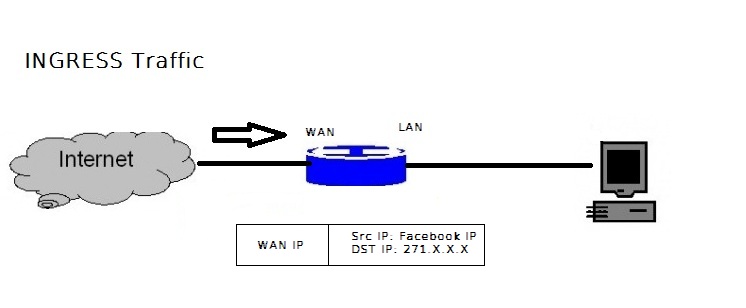

The returned value is used in the encap_and_redirect_lxc function call that encapsulates the packet and forwards it to the Node with IP 172.18.0.3.
 Return the value with egress IP of 172.18.0.3 and tunnel endpoint of 172.18.0.3. The above can be translated as the following: $ kubectl -n cilium exec -it $cilium - bpftool map dump pinned /sys/fs/bpf/tc/globals/cilium_egress_v4 We can use these Pods to verify the (default) local egress behaviour by sending an HTTP GET to the echo server: $ kubectl -n default get pod -l name=net-tshoot -o name | xargs -I') NAME READY STATUS RESTARTS AGE IP NODE NOMINATED NODE READINESS GATES To make sure there’s is no interference from kube-proxy we’ll remove it completely along with any IPTables rules set up by it: make nuke-kube-proxyĭeploy an “external” echo server that will be used to check the source IP of the incoming request: make egress-prepīy default, we should have a net-tshoot daemonset running on all Nodes: $ kubectl -n default get pod -owide PreparationĪssuming that the lab environment is already set up, Cilium can be enabled with the following command: Refer to the respective sections of the kindnet, flannel, weave, calico and cilium chapters for more details.įor this lab exercise, we’ll focus on how Cilium implements the Egress Gateway functionality via a custom resource called CiliumEgressNATPolicy. The way direct local egress works has already been described in the CNI part of this guide. The rest of the forwarding is done by the underlying network. In both cases, the end result is that a packet leaves one of the Kubernetes Nodes, SNAT’ed to the address of the egress interface.
Return the value with egress IP of 172.18.0.3 and tunnel endpoint of 172.18.0.3. The above can be translated as the following: $ kubectl -n cilium exec -it $cilium - bpftool map dump pinned /sys/fs/bpf/tc/globals/cilium_egress_v4 We can use these Pods to verify the (default) local egress behaviour by sending an HTTP GET to the echo server: $ kubectl -n default get pod -l name=net-tshoot -o name | xargs -I') NAME READY STATUS RESTARTS AGE IP NODE NOMINATED NODE READINESS GATES To make sure there’s is no interference from kube-proxy we’ll remove it completely along with any IPTables rules set up by it: make nuke-kube-proxyĭeploy an “external” echo server that will be used to check the source IP of the incoming request: make egress-prepīy default, we should have a net-tshoot daemonset running on all Nodes: $ kubectl -n default get pod -owide PreparationĪssuming that the lab environment is already set up, Cilium can be enabled with the following command: Refer to the respective sections of the kindnet, flannel, weave, calico and cilium chapters for more details.įor this lab exercise, we’ll focus on how Cilium implements the Egress Gateway functionality via a custom resource called CiliumEgressNATPolicy. The way direct local egress works has already been described in the CNI part of this guide. The rest of the forwarding is done by the underlying network. In both cases, the end result is that a packet leaves one of the Kubernetes Nodes, SNAT’ed to the address of the egress interface. 
Istio’s Egress Gateway, or at an IP level, e.g. The operation, UX and redirection mechanism are implementation-specific and can work at an application level, e.g. For security reasons, some or all egress traffic can get redirected to an “egress gateway” deployed on a subset of Kubernetes Nodes.the ipMasq option of the bridge plugin, or by a separate agent, e.g. This is normally provisioned by a CNI plugin option, e.g. By default, traffic leaving a Pod will follow the default route out of a Node and will get masqueraded (SNAT’ed) to the address of the outgoing interface.However, we still need a way to allow for Pod-initiated external communication, without a service mesh integration, and this is how it can be done: Consul’s Terminating Gateway or OSM’s Egress Policy API. For situations when a Pod needs to communicate with an external service, it would make sense to do this via an API gateway rather than allow direct communication and most of the service meshes provide this functionality, e.g. This is because most of the egress traffic is not revenue-generating and, in fact, can be completely optional. Unlike its counterpart, egress traffic is not controlled by any standard Kubernetes API or a proxy. Egress is a very loosely defined term in the Kubernetes ecosystem.







 0 kommentar(er)
0 kommentar(er)
